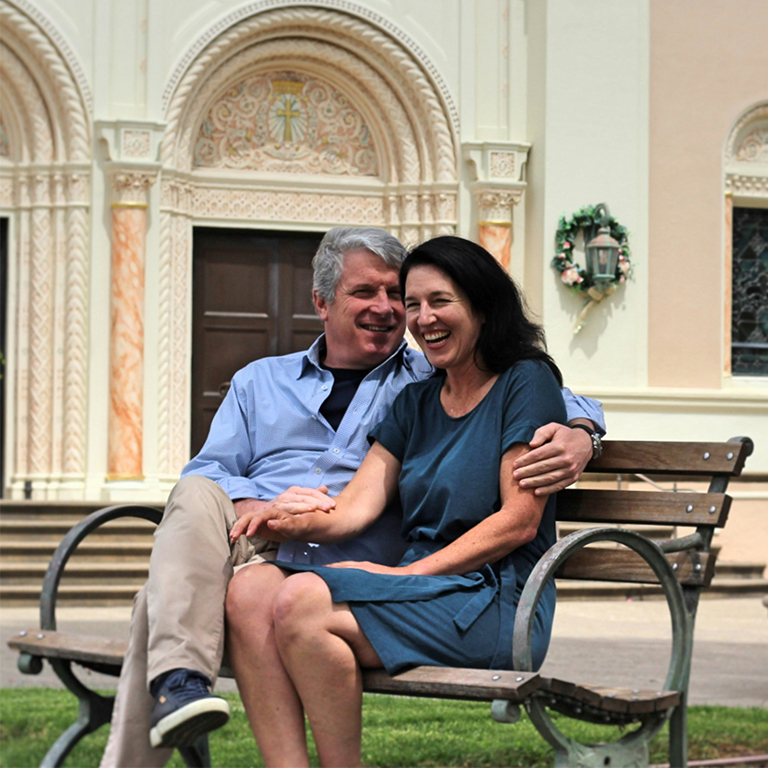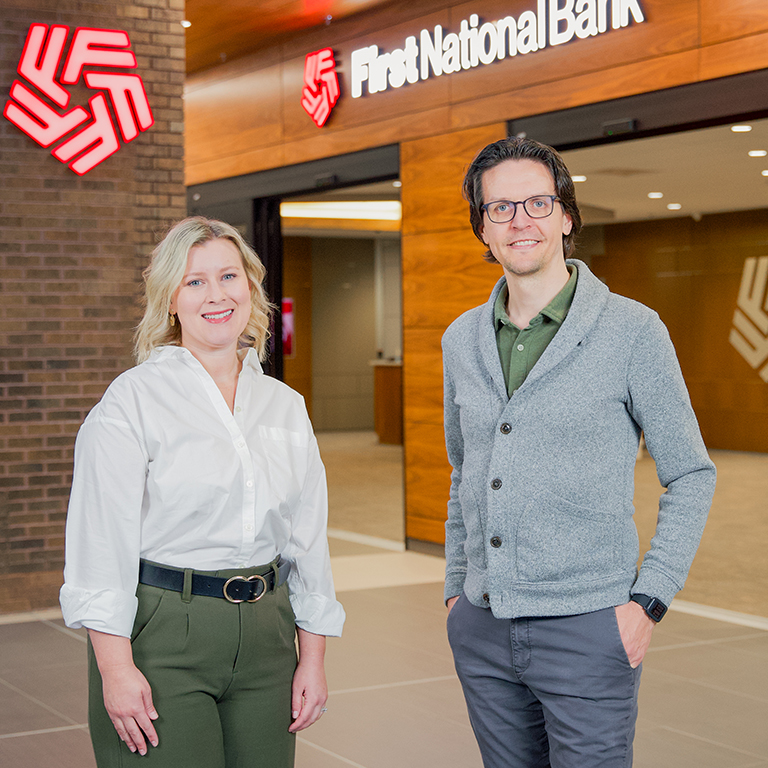Imagine it’s 1885 in Sioux Falls and you’re about to board a train for Chicago. The railway snakes hundreds of miles across the lonely prairie, and those miles set these cities worlds apart.
How so? The money in your wallet is the key.
First National Bank was founded in 1885 as Minnehaha National Bank. But in those days, we didn’t have Federal Reserve Bank Notes like we carry today.
Instead, banks issued their own currency — but it was only as good as the name printed on the bill.

Issued in 1889 from “The Minnehaha National Bank of Sioux Falls,” this $20 note was legal currency, backed by the good faith of the bank.
People traded on trust, which meant a trip from Sioux Falls to Chicago was risky if you didn’t have the right bank behind you. To do business with people in other cities meant your financial institution needed enough clout to make your money worth more than the paper it was printed on.
But how did a bank achieve that kind of trust, when you could leave your city with the confidence your notes (money) would be honored?
The late 19th century was a tumultuous time. In fact, in 1893 alone, 16,000 businesses closed their doors — including 156 railroads and 600 banks.
These economic episodes were called “panics.” They caused bank runs and sparked rapid declines in financial stability.
In this case, the Panic of 1893 resulted in one-in-six American men being out of work. So, achieving a status of stability and respect as a bank in that era was not a simple feat.

This undated photograph shows the Bank lobby in the early 20th century: marble counters, “candlestick” telephones, and stern-faced tellers.
A Different Kind of Capital
There was another form of currency banks like ours worked on: reputation.
The public image of the central leader was all-important. This meant the president of your local bank wasn’t first a financier — he was a public figure.
When a new bank president was selected, his reputational capital was the driving force. That way, the bank and its patrons could cash in on his name with confidence.
Fortunately for us, the first president of our bank was a man named Edwin A. Sherman, a visionary.
 He grew up an East Coast man but found his way to the prairie in 1873.
He grew up an East Coast man but found his way to the prairie in 1873.
Edwin came here to find his fortune and brought a shovel with him. He immediately broke ground developing real estate, founded two banks and a trust company, and even built the first electric company in the town.
While people respected his business acumen, he also earned the trust of the city by faithfully serving it.
Edwin is remembered most as the “father” of the Sioux Falls park system.
He personally donated 53 acres for what we know today as Sherman Park, picked up the tab for improvements, and lobbied his friend Helen McKennan to donate 10 acres to create McKennan Park — which the city still enjoys today.
This was the credential a bank in the 1880s needed to grow and weather the financial tumult ahead.
Edwin was the kind of man you expected to helm a bank. His successor, though, was quite a surprise.
The Tragic Prodigy
On the third floor of our Downtown location, just outside the former boardroom that has witnessed countless monumental decisions through the decades, there’s a special hallway.
On the wall near the boardroom’s rich wooden door hang portraits of each president in chronological order, and their faces tell the story of their times.
Edwin has the classic look of a tycoon, a gentleman bursting with energy and wit. With his well-kept white beard, sharp suit, and shiny lapel pin, he looks like he belongs there.
Next to him is a man named Joseph Meade Bailey Jr., his successor — and the two could not look more different.
Joseph stepped into the role in 1888, at just 23 years old. He was the youngest national bank president in the country at the time.
 Among the tenured-looking leaders in that hallway, Joseph pops out like fresh paint in an old room. Baby-faced and serious, he was a prodigy.
Among the tenured-looking leaders in that hallway, Joseph pops out like fresh paint in an old room. Baby-faced and serious, he was a prodigy.
Joseph enrolled at Rochester University in New York at age 14 and leaped into finance soon after.
He followed his brother to the magnetic city of Sioux Falls, led banks, managed loans, and was the driving force of a consolidation between Citizens National Bank and our own — and he punched that through in his first month as president.
Another of his charms turned out to be recruiting a fellow East Coaster and former classmate, William Lafayette Baker (W. L. to the rest of the world).
W. L. joined him at the Bank as his Cashier in 1889, and when economic troubles struck, W. L. and Joseph began to invest in the Bank stock to stabilize it and infuse it with capital. W. L.’s commitment was so great, he actually borrowed funds to do so.
While times were tough, Joseph and W. L. worked well together, rekindling their college friendship. However, a graver trouble soon followed.
When W. L. arrived in Sioux Falls, it must’ve been a culture shock.
The city was just 30 years old and still rough-and-tumble. It’s hard to believe he’d come to Sioux Falls to build more than banks or businesses.
Just two years into his tenure with his friend Joseph, tragedy struck.
Joseph unfortunately battled health challenges his entire life, and he passed away from blood poisoning, believed to be related to a childhood horse incident.
The youngest national bank president in the nation, the prodigy of Rochester University, and classmate to W. L. was gone.
 So there W. L. was, in a city far from home, without his friend who’d become like family, and the leader by default of a startup bank.
So there W. L. was, in a city far from home, without his friend who’d become like family, and the leader by default of a startup bank.
He faced a choice: embrace the leadership role he’d been thrust into at the Bank, or pack up and leave the town where he’d never planned to stay.
Everyone has a defining moment, a choice that sets the course for their future. This was undoubtedly one of his.
W. L. chose to stick it out, catching a vision for a financial institution, and a city, that would not simply survive, but thrive.
Financial waves continued to rock the country into the teens of the twentieth century.
W. L. went on to be elected president of the Bank in 1910, where the gentlemanly leader stayed until his death in 1939.
His tenure proved a great stabilizing force, not only for the Bank, but for Sioux Falls itself.


